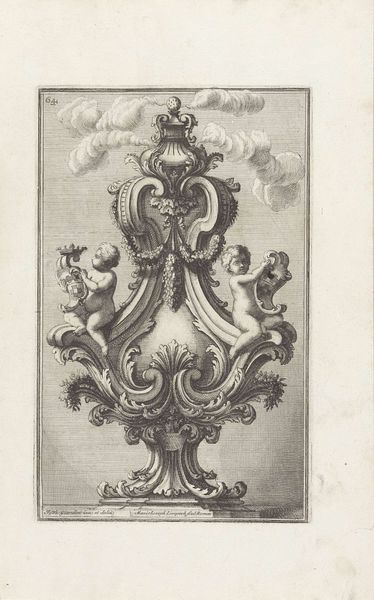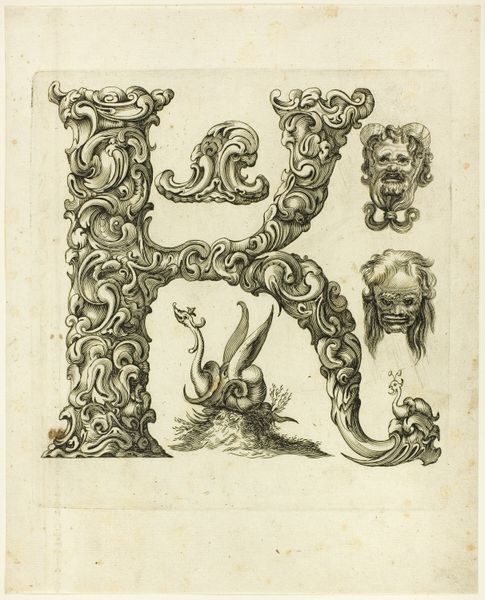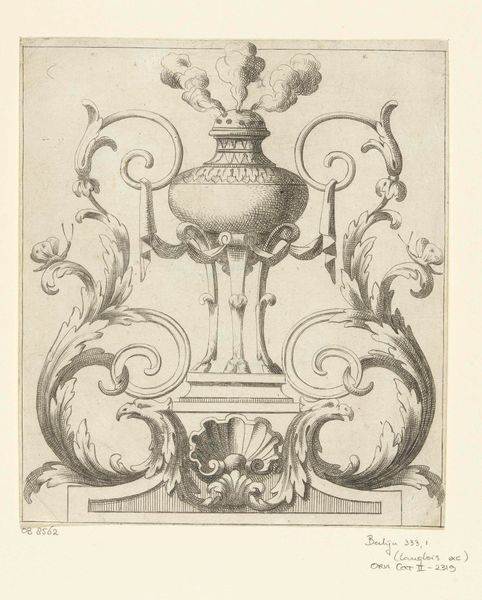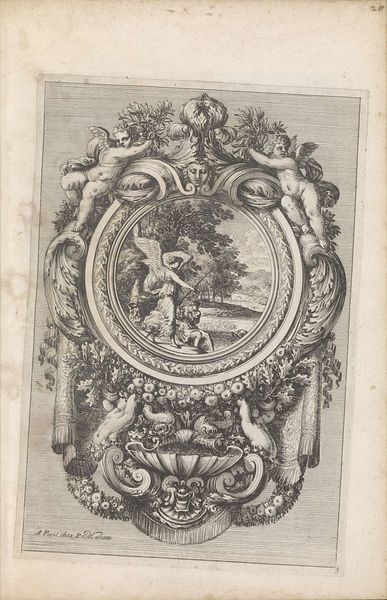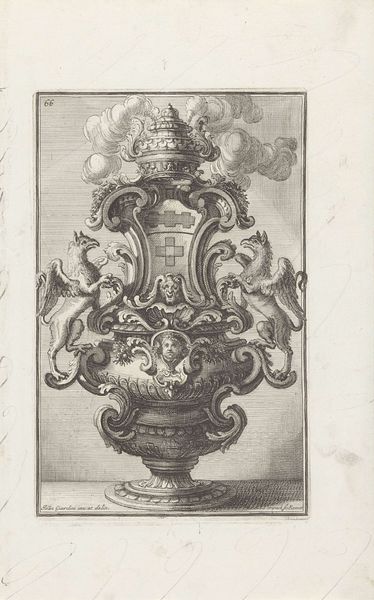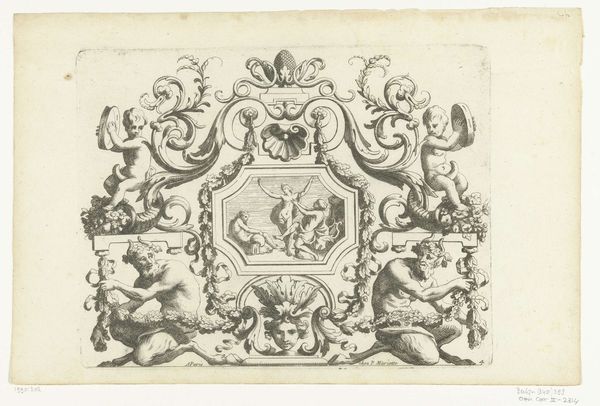
drawing, print, intaglio, engraving
#
drawing
#
allegory
#
pen drawing
# print
#
intaglio
#
form
#
11_renaissance
#
line
#
engraving
Dimensions: height 278 mm, width 190 mm
Copyright: Rijks Museum: Open Domain
Orazio Scoppa made this design for a silver vase sometime in the first half of the 17th century. It’s made with etching, a printmaking technique that allows for incredible detail. This object gives us a glimpse into the world of luxury goods and artistic patronage in the baroque era. Note the figures of putti, the mythological creatures, and the swags of fruit: all meant to evoke wealth, power, and cultural sophistication. This vase design reflects the artistic tastes of the Italian upper class, with its emphasis on elaborate ornamentation and classical motifs. In baroque Italy, art served as a crucial means for families to display their status, and artists like Scoppa catered to this demand by creating designs for decorative objects like this. To truly understand this design, one could delve into the history of the printmaking trade and its relationship to artistic training and patronage in 17th-century Italy. This object reminds us that art is not just about individual expression, but also about the social conditions that shape its creation and reception.
Comments
No comments
Be the first to comment and join the conversation on the ultimate creative platform.
